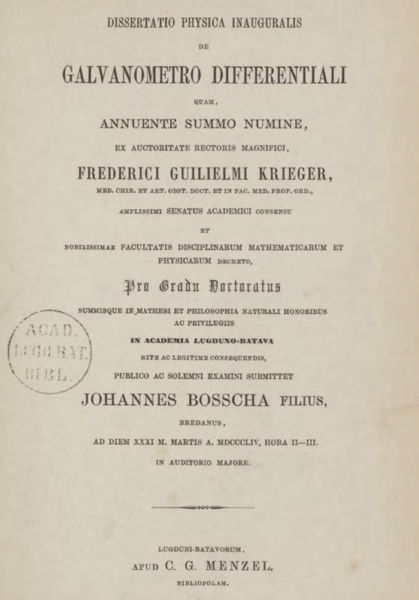
Bosscha and the invention of tele-electrocardiography Bosscha's Ph.D. thesis from 1854 was entitled De galvanometro differentiali - "on the differential galvanometer" (it was the last Leiden physics thesis in Latin). Bosscha described the technical complexities of measurements of very small electrical currents by means of the magnetic field that they produced. It was known that currents flowed in a beating heart, but these were too small to be detected without placing the electrodes on the organ itself. An improved galvanometer with the required sensitivity was realized half a century later by Willem Einthoven, who first reported on his string galvanometer in a 1901 collection of articles to celebrate the 70th birthday of Bosscha. To examine hospitalized patients Bosscha suggested to connect the physics laboratory with the hospital by a telephone line: The first telecardiogram was recorded by Einthoven on March 22, 1905. (Here is an account in Dutch of these early developments, and here the search for Einthoven's lab is described). |

If you have visited the Instituut-Lorentz you may have noticed a drawing of an old man at the entry to our Casimir room. And if you have looked into some old books or bound journals from our library you may have seen the stamp "Leeskamer Bosscha". That is Johannes Bosscha (1831-1911), a friend and mentor of a string of Nobel laureates from Leiden: Lorentz, Van der Waals, Zeeman, Kamerlingh Onnes, and Einthoven. The first three were Ph.D. students of Pieter Rijke, just like Bosscha himself. After his Ph.D. Bosscha stayed in Leiden as Rijke's assistant, and then became professor of physics first at the Military Academy in Breda and later at the Polytechnical School in Delft. This biography describes the role Bosscha played in the development of Dutch physics in the second half of the 19th century.
![]()